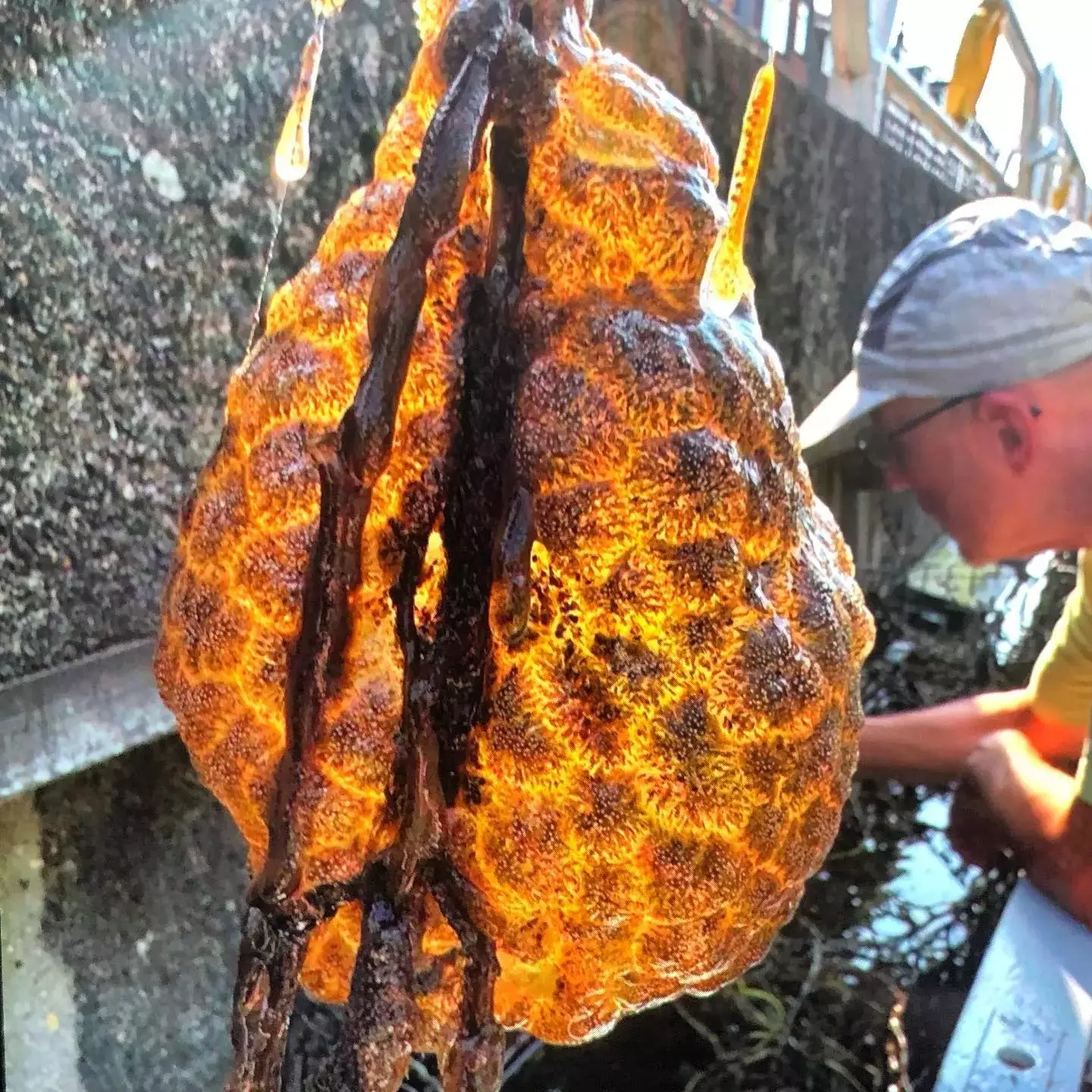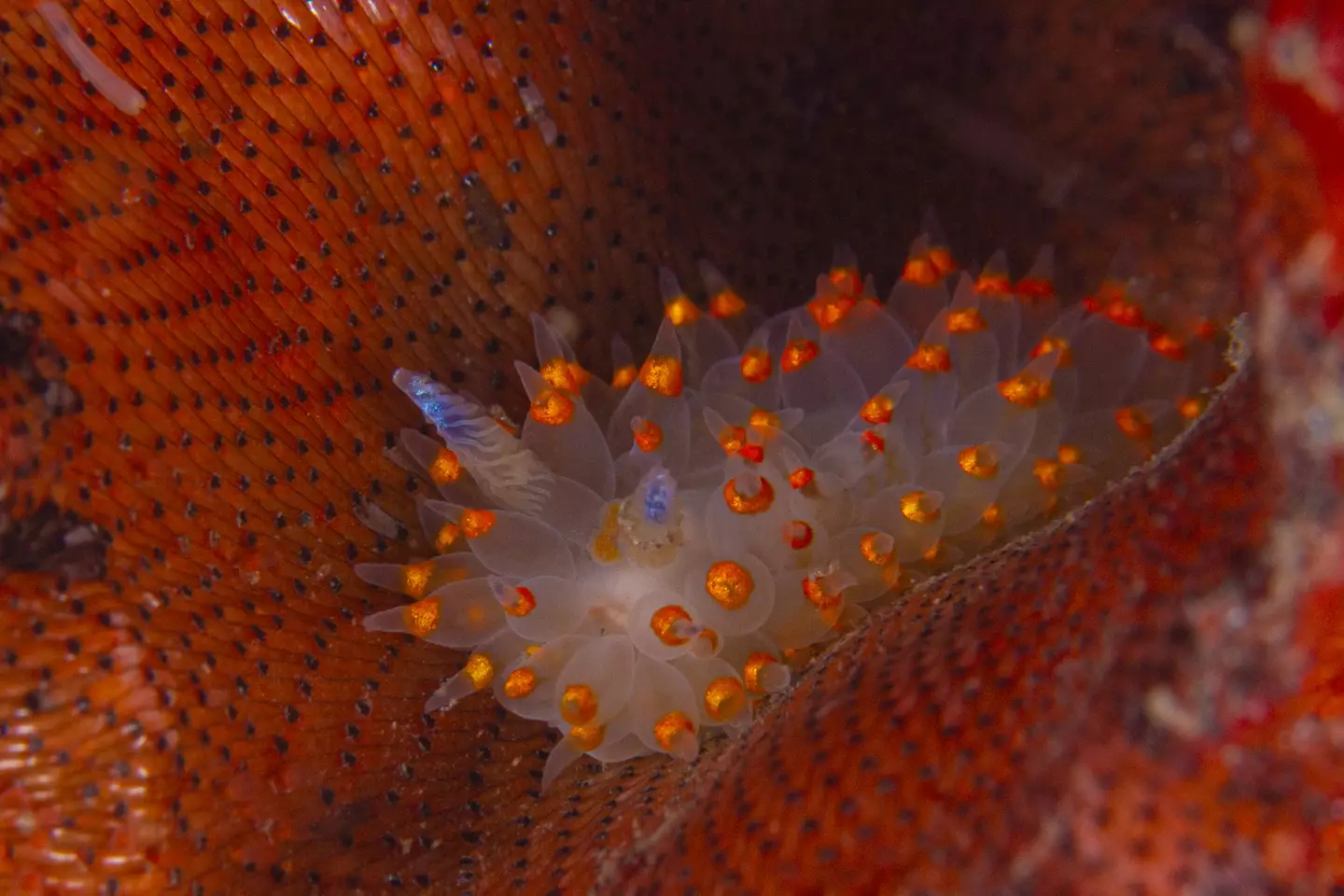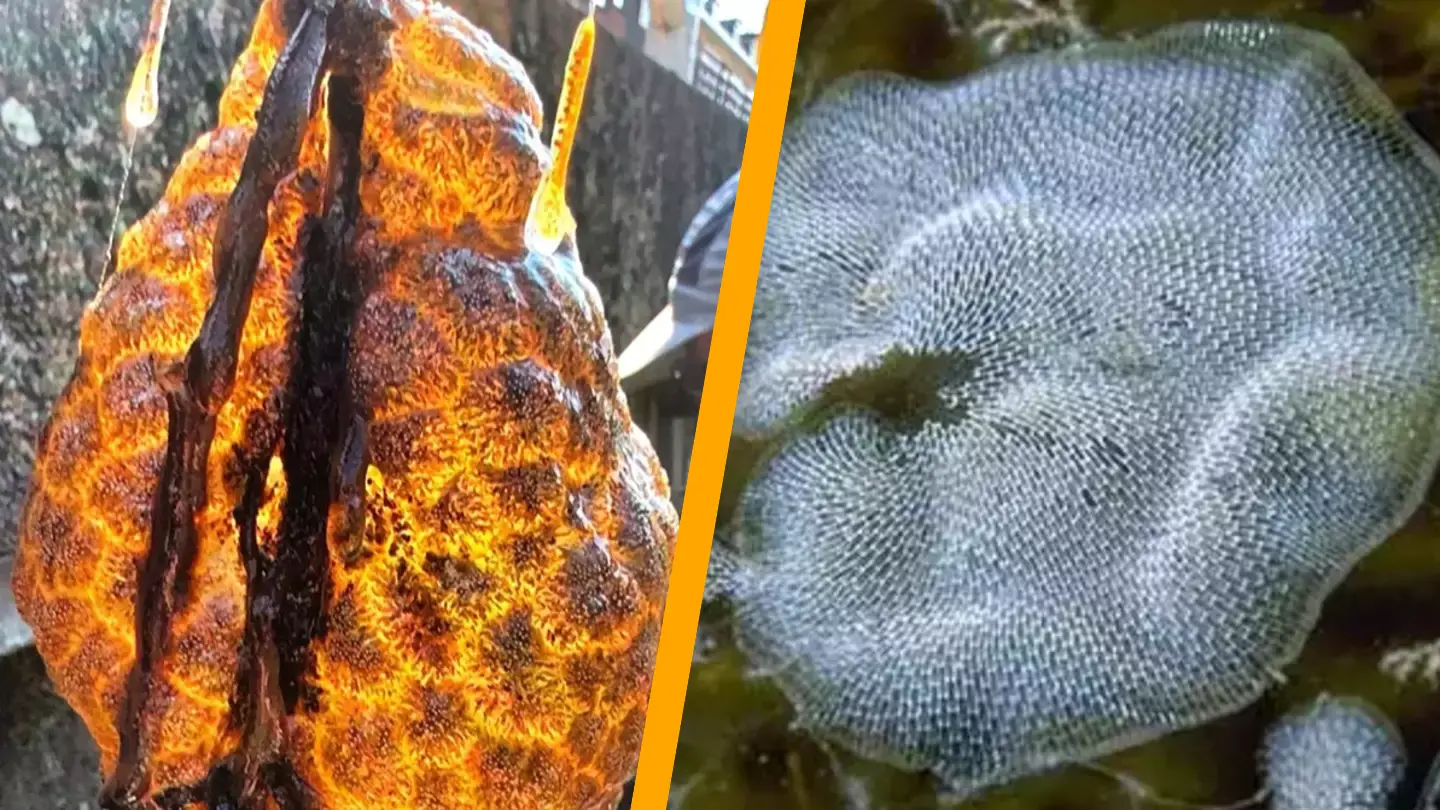Just when it seems like we’ve uncovered all there is to know about our planet, something unexpected emerges to surprise us.
With the arrival of the spooky season, many have been unsettled by the sight of peculiar ‘glowing’ orange pods that bear a striking resemblance to dinosaur eggs.
How are we still discussing dinosaurs in 2024 when these creatures went extinct 65 million years ago, after having roamed the Earth for approximately 165 million years?
However, these orange pods, reminiscent of glowing dinosaur eggs, have left experts baffled, especially since they were found in a canal in Utrecht, a city in the Netherlands.

Scientists soon identified these odd pods as a colony of Bryozoans, which are often shaped like what we imagine dinosaur eggs to look like.
The Monterey Bay Aquarium website defines Bryozoans as small invertebrates that grow from a single organism into a colony of thousands, potentially covering an entire kelp blade. Each bryozoan, known as a zooid, resides in a box-shaped compartment composed of calcium carbonate and chitin, a material also found in crab shells. These zooids are tiny, perhaps no taller than 1/32 of an inch.
According to the website, there are about 4,000 species within the Bryozoa group, highlighting their widespread nature.
They have small mobile pincers called avicularia that help clear any organisms that try to settle on them, as they continue to grow in unexpected ways.
If a part of the pod happens to break off, it can still thrive because it has the ability to establish a new colony.

Bryozoans have a global presence, typically found in kelp forests and along rocky shores, which made their discovery in a Dutch canal quite curious for experts.
Anne Nijs, a local ecologist, mentioned to AD that such findings are unprecedented in the Netherlands, prompting investigations into how they arrived there.
“The big bag is formed by several animals together. At a certain point, they form a colony and different colonies can then stick together again. A bag can become 2 meters in diameter. That bag then attaches itself to something,” she explained.
“It is the first time that they have been discovered here. So it is a very special story.”
Despite their alarming appearance, Nijs assured that they pose no harm.

